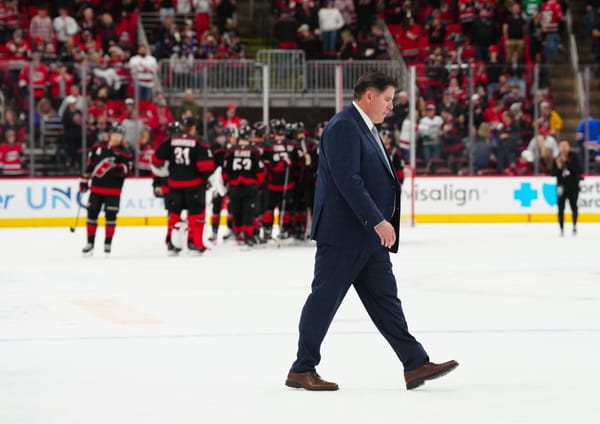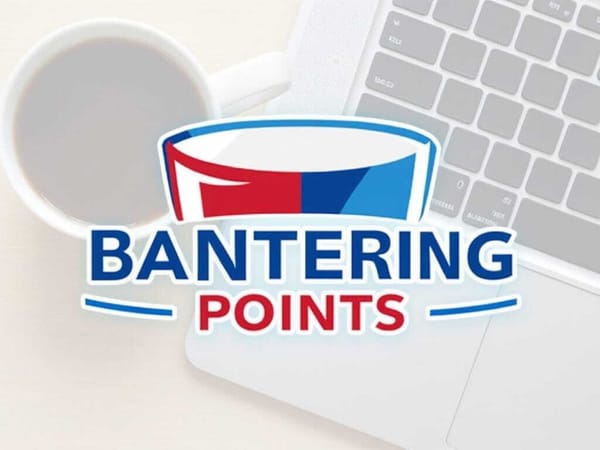The Rangers Most Costly Deadline Deals
Reflecting on Rangers deadline deals in the past that proved to be mistakes for one reason or another
As we all know, the New York Rangers are not going to be buyers at the trade deadline this year. For the second-straight season Jeff Gorton will be moving players with expiring contracts and adding picks and prospects to the organization as it rebuilds. However, it wasn’t that long ago when Gorton and the Rangers were buyers.
Today, we’re going to reflect on some of the Rangers’ costliest deadline trades from the last 25 years. These are some of the trades that cost too much and didn’t do nearly enough to help the team. Go grab some ibuprofen.
Note: Trades from the 1993-94 season, such as the Tony Amonte deal and the Mike Gartner deal, were excluded because the Rangers won the Cup.
Eric Staal
- Day of the Deal: Feb. 28, 2016
- General Manager: Jeff Gorton
- The Cost: 2016 2nd round pick, 2017 2nd round pick, Aleksi Saarela/
At the time of the deal, the Rangers had Derick Brassard and Derek Stepan down the middle, which made Staal a preposterous luxury — like a disposable razor made of gold. But that didn’t stop Jeff Gorton from giving up a lot of futures for him. Saarela, now 22, is showing a lot of promise in the AHL, so this deal still has a lot of potential to look worse than it already does in a few seasons.
Apparently, Gorton refused to give up a first round pick in the deal and instead offered two second round picks and Saarela. And, to be fair, Staal was having a down year at the time of the trade but was still a big name player who should have been able to help the Rangers.
Unfortunately, Staal fit into Alain Vigneault’s Rangers like a guy wearing camo overalls eating a Slim Jim fits in at a vegan restaurant. Playing mostly on the third line at even strength, Staal notched three goals and three assists in 20 regular season games before going scoreless in five postseason games. In other words: it did not work out.
Following that trade, Staal went on to enjoy a renaissance with the Minnesota Wild. He scored 42 goals last season in Minnesota, which gave Rangers fans 42 more reasons to curse Vigneault.
The Keith Yandle Deal
- Day of the Deal: March 1, 2015
- General Manager: Glen Sather
- The Cost: Anthony Duclair, John Moore, 2015 2nd round pick, 2016 1st round pick/
The price tag on the Yandle deal looks huge, but it’s important to remember he wasn’t a rental — Yandle was signed through the 2015-16 season. Oh, and the Rangers got a 4th round pick in 2015 and an AHL-level defenseman (Chris Summers).
Alright, that price tag was still huge.
What the Rangers thought they were getting in return for two of their best prospects and two early round draft picks was an elite offensive defensemen. Unfortunately, that isn’t how Vigneault saw Yandle.
Yandle played 108 games for the Rangers and piled up 51 points, but those numbers would have looked better if Vigneault trusted him more. Yandle averaged 17:07 even strength TOI per game during his tenure in New York. That ranked him fifth on the team behind Ryan McDonagh, Dan Girardi, Marc Staal, and Kevin Klein. Yandle averaged 2:45 TOI/GP on the power play and averaged just shy of one power play point for every four games he played in New York.
It was, at best, highly suspect usage for a player the Rangers broke open the piggy bank to acquire.
When it became clear the Rangers weren’t going to re-sign Yandle in the 2016 offseason, Gorton dealt his rights to Florida to acquire a 2016 6th round pick and a 2017 4th round pick. What a waste.
Ryane Clowe
- Day of the Deal: April 2, 2013
- General Manager: Glen Sather
- The Cost: 2013 2nd round pick, 2013 3rd round pick, 2014 conditional 2nd round pick (became a 5th round pick)/
Before being dealt to the Rangers, Clowe had no goals, 11 assists, and 69 PIM in 25 games for the Sharks in the 2012-13 season. He was a skilled power forward, but because of his injury history he was something of a gamble, especially for a rental. But the Rangers felt they were lacking grit and toughness after letting Brandon Prust and Ruslan Fedotenko leave the team as free agents in the 2012 offseason. Clowe was supposed to be the expensive roll of duct tape that fixed that problem.
Clowe had eight points in 12 games with the Rangers after the deal, including an unforgettable first game where he scored two goals. Unfortunately, Clowe suffered two concussions in a span of 16 days with New York, which cut his season short and limited him to just one postseason appearance.
As a free agent Clowe signed a five-year, $24.25 million deal with the Devils on July, 5 2013. Sadly, injuries forced him off the ice long before his contract expired in 2018. If the Rangers had re-signed Clowe or reached the Eastern Conference Final in 2013, they would have given up their 2014 2nd round pick. That pick became Brandon Halverson. Instead, that conditional pick was the Rangers’ 5th round selection in the 2014 Draft.
Derek Morris
- Day of the Deal: March 4, 2009
- General Manager: Glen Sather
- The Cost: Petr Prucha, Nigel Dawes, Dmitri Kalinin/
At first glance, it might not look like the Rangers gave up too much in this deal, but there’s more to this one than you might expect. And it involves Kazakhstan.
Morris was strictly a rental for the Rangers. He was Arizona’s top offensive defenseman before the emergence of Yandle and Oliver Ekman-Larsson. But, unlike Yandle and OEL, he was a star with the Calgary Flames and the Colorado Avalanche before he was ever a Coyote. He also had a noteworthy edge to his game.
As you might expect, Sather wanted Morris, a right-handed defenseman, to fix the Rangers’ power play and bolster the blue line, and he was willing to give up a lesser defensemen and two undersized, younger players to make it happen. Interestingly enough, Sather made 11 trades with the Coyotes from June 26, 2004 to June 27, 2015 as the Rangers general manager. They would have been best friends on Snapchat for sure.
Morris picked up four points on the power play and three even strength assists in 18 regular season games with the Rangers. Disappointingly, he put up just two points for the Rangers in seven playoff appearances in 2009.
So, what did the Coyotes get in return? Well, in this case it isn’t quite what the Coyotes received as much as it is what the Rangers let slip through their fingers.
Prucha had a 13-goal season in his first full-year with the Coyotes, but failed to find the scoring touch that made him a fan favorite on Broadway. By the 2010-11 season, he had taken his talent to the KHL.
Dawes, on the other hand, has had one of the most fascinating hockey careers in recent memory. After being dealt to Phoenix, he was claimed off waivers by the Calgary Flames and had 32 points in 66 games in 2009-10. He spent the next season with Montreal and Atlanta, and their farm teams, before going to the KHL. There he became a superstar and a citizen of Kazakhstan.
Dawes is third in the KHL in points since the 2010-11 season. Read that sentence gain. Third in points over nearly a decade in a league that is now considered second only to the NHL in regards to talent. Dawes has 403 points in his last 430 games in the KHL and is now 33 years-old.
If this deal never happened, maybe Dawes’ career would have taken a different direction and he could have established himself as a quick, crafty middle-six winger in New York. Maybe, but we’ll never know. What we do know is that Morris was, ultimately, forgettable as a Ranger. And that there are a lot of people who have Petr Prucha jerseys in the back of their closets.
Jari Kurri, Marty McSorley, and Shane Churla
- Day of the Deal: March 14, 1996
- General Manager: Neil Smith
- The Cost: Ray Ferraro, Ian Laperriere, Mattias Norstrom, Nathan Lafayette, 1997 4th round pick/
Neil Smith swung for the fences and was probably thinking about the 1980s Oilers when he dealt Ray Ferraro, Mattias Norstrom, Ian Laperriere, an AHL center (Nathan Lafayette), and a 4th round pick for a 32 year-old Marty McSorley, a 35 year-old Jari Kurri, and a 30 year-old tough guy (Shane Churla). If that wasn’t the reason Smith did this deal, it’s hard to imagine what other motivating factor it could’ve be— oh. It was about toughness. Of course it was.
“I don’t think that size and strength is going to beat us in the playoffs,” Neil Smith told the New York Times after the deal. “The playoffs is not the same as the regular season. Our decision-making has been sound. We’re going to be very, very hard to beat.”
As it turns out size and strength didn’t beat the Rangers in the playoffs that year. Mario Lemieux, Jaromir Jagr, Petr Nedved, Sergei Zubov, and the Pittsburgh Penguins beat them. In five games.
Ferraro, who had 54 points in 66 games with the Rangers before the trade, went on to have 255 more points in his NHL career, Mattias Norstrom played 878 games with the Los Angeles Kings and the Dallas Stars and wore the “C” in Los Angeles for half a dozen years. Laperriere had his own lengthy career as a productive and popular enforcer and energy line player. He played 983 games in the NHL after the Rangers dealt him at 22 years-old, and he did it the hard way — with 1949 career PIM. The Rangers had acquired Lapierriere earlier in the season, just after Christmas, for the immortal Stephane Matteau.
After the trade, Kurri scored five points in 14 regular season games for the Rangers. The legend redeemed himself a bit by picking up eight points in 11 games in the playoffs, but Smith’s plan to turn back the clock by reuniting him with Messier failed.
McSorley, one of the most despised players to ever play the game, dressed in only nine games as a Ranger. He was traded on Aug. 21 1996 to the Sharks for Jay More, Brian Swanson and a 1998 4th round pick. Just a few years later, McSorley would be guilty of one of the most disgusting acts we’ve ever seen in a hockey game.
Churla had one assist in 55 regular season games with the Rangers, but did score four points — including two goals — in the 1996 Playoffs. He also earned 126 penalty minutes with the Rangers, so he did add some of the toughness that Smith was after. Unfortunately, the Rangers paid a ridiculously high price for it.




